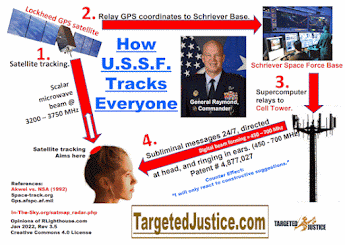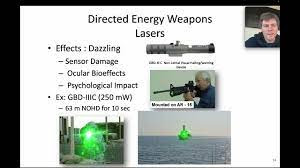Patent No. 4940058 Cryogenic remote sensing physiograph
Patent No. 4940058 Cryogenic remote sensing physiograph (Taff, et al., Jul 10, 1990)
Abstract
Apparatus and method for remotely detecting super-low frequency (SLF) and extremely-low frequency (ELF) signals eminating from human subjects. The SLF/ELF signals are composed of various wavelengths and amplitudes which correspond to the subjects internal physiological processes. The apparatus includes: a supercooled multi-plate arrayed antenna for detecting the SLF/ELF signals; an analog signal conditioner unit adapted to filter out signals having a frequency of greater than 40 Hertz; and a digital signal processor unit adapted to perform Fast Fourier Transform and autocorrelation signal analyses for separating signal wavelengths and amplitudes which correspond to the internal physiological processes and represent EKG, EEG, EMG, EOG and respiration measurements.
Notes:
BACKGROUND
OF THE INVENTION
Many physiological processes are characterized by the generation and propagation
of multiple, dynamic and often transient electrical phenomena from the respective
tissues and organs where they originate. The purpose of recording physiological
signals is to obtain a record which is an exact facsimile of the events under
investigation. However, it is seldom feasible to attach pickup elements directly
to the tissues or organs being investigated, and some method of sensing the
electrical phenomena from the surface of the body is usually employed. Such
methods introduce measurement errors that result in a distorted picture of the
processes being recorded. In spite of this limitation, these techniques have
proven to be highly useful for the medical profession.
A wide variety of pickup elements of various sophistication have been developed
and are presently available for recording many important phenomena associated
with various physiological function from different anatomical sites. The important
requirements for sensing electrodes and transducers presently employed in electrophysiological
monitoring and recording are: (a) attachment to the body must result in a minimum
of discomfort and movement restriction; (b) once applied, they should maintain
their operation status without deterioration for extended periods of time; (c)
avoid the necessity for reapplication and/or relocation; and (d) they must allow
for a far greater degree of subject movement than usually prevails in clinical
investigations.
Although a great deal of effort has already been spent in reducing the weight
and size of electrodes and transducers, and in minimizing the adverse effects
that occur over prolonged time periods, the present state of the art is far
from ideal.
The methods employed for applying even simple bioelectric pickup electrodes
in many instances is quite traumatic, as they require abrasion and debridement
of the superficial keratinized skin layers. Such procedures frequently cause
discomfort, and many contribute to the cause of skin reactions when electrodes
are left applied to the same locations for many hours or days. The following
scientific studies published in scientific and medical Journals are indicative
of previous efforts in remotely recording electromagnetic fields that correspond
to internal physiological processes of biological organisms without the use
of any intermediary materials or electrodes attached to the skin:
(1) Burr, H. S., and Northrop, F., "The Electrodynamic Theory of Life", Quarterly
Review of Biol., 1935, 10:322
(2) Burr, H. S., and Northrop, F., "Evidence For The Existence Of An Electrodynamic
Field In Living Organisms", National Academy of Sciences, 1939, 25:284
(3) Burr, H. S., and Maure, A., "Electrostatic Fields of Sciatic Nerve In The
Frog", Yale J. of Bio. Med., 1949, 21:455
(4) Seipell, H., and Morrow, R., "The Magnetic Field Accompanying Neuronal Activity
Of The Nervous System", J. Wash. Acad. Sci., 1960, 50:1
(5) Cohen, D., "Magnetoencephalography: Evidence Of Magnetic Fields Produced
By Alpha-Rhythm Currents", Science, 1968, 161:784
(6) Cohen, D., "Magnetoencephalography: Detection Of Brain's Electrical Activity
With A Superconducting Magnetometer", Science, 1972, 175:664
(7) Cohen, D., "Magnetic Fields Of The Human Body", Physics Today, Aug. 1975,
pp. 34-43
(8) Gulyaev, P. I., Zabotin, V. L. & Shippenbakh, N.Y., "The Electroauragram
Of The Frog's Nerve, Muscle, Heart And Of The Human Heart And Musculature",
Doklady Biological Science, 1968, 180, pp. 359-361
(9) Gulyaev, P. I., "The Electroauragram: The Electric Field Of Organisms As
A New Biological Connection", Proceedings Of Symposium On Physics And Biology,
Moscow, 1967, p. 19
(10) Goodman, D. A. and Weinberger, N. M., "Remote Sensing Of Behavior In Aquatic
Amphibia Especially In Necturus Maculosus, The Mud Puppy", Comm. Behavioral
Biology, 1971, 6, pp. 67-70
(11) Goodman, D. A. and Weinberger, N. M., "Submerged Electrodes In An Aquarium:
Validation Of A Technique For Remote Sensing Of Behavior", Behav. Res. Meth.
& Instru., 1971 3:6, pp. 281-286
Other devices have eliminated the necessity of topically connecting electromagnetic
sensors to a person's skin. Some of these devices are described in U. S. Pat.
Nos. 3,980,076 (Wikswo et al), 4,079,730 (Wikswo et al) and 4,444,199 (Shafer).
However, these devices are not totally remote in that they will not operate
through the ambient atmosphere from up to 12 feet away. Similarly, there have
been problems in measuring the EKG, EEG, EMG, EOG and respiration in the super-low
frequency (SLF) and extremely-low frequency (ELF) range of 0.3 to 40 Hertz.
Thus, there exists a need for the development of physiological monitoring methods
and equipment that do not require direct contact with the subject's integument
(skin layer), and thus relieve the subjects from annoyance and encumbrance of
bodily attachments.
SUMMARY OF THE INVENTION
The invention comprises a method
and apparatus (or system) for the investigation of electromagnetic (EM) waves
in the 0.3 to 40 Hertz realm. The SLF/ELF frequency range is generally considered
to be from D. C. to approximately 100 Hz. As used herein, superlow frequency
(SLF) and extremely-low Frequency (ELF) is a frequency from 0.3 to 40 Hz that
corresponds to internal physiological processes. The elements necessary for
this type of system are: an antenna, an analog signal conditioner, fiber-optic
data links, and a digital signal processor. In the preferred embodiment of the
invention the antenna consists of a three element array of supercooled super-conducting
niobium plates for the detection of electromagnetic waves in the 0.3 to 40 Hz
range with amplitudes in the nanovolt to millivolt range. The three element
antenna array is for spatial signal referencing. Each antenna element has its
own integral field effective transistor (FET), pre-amplifier and filter which
are enclosed in a separate, thermally regulated (via power transistor and thermostat)
Dewar flask arrangements at 77.degree. C. Kelvin as opposed to the niobium antenna
plate elements which are cooled to 3.7.degree. K. The arrayed antenna is capable
of detecting SLF/ELF signals at distances of up to 12 feet. The arrayed antenna
output is coupled to the input of low noise, optically isolated analog signal
conditioner circuitry with self-contained power source incorporating a follower
circuit and output amplifier. The analog signal circuitry has optically isolated
(low-noise) first stage which reduces the random 1/f noise of the transistor
which in turn improves the signal-to-noise ratio.
The next stage of the analog signal conditioner is an analog fiber-optic data
link flowing into a low-pass 40 Hz filter which serves as an output buffer.
The output of the signal conditioner is coupled to the input of the digital
signal processor system. The input of the digital signal processor is a very
fast (nanosecond) 16-bit analog-to-digital converter which allows for the storage
of waveforms in the computer memory. The computer (such as a Micro Vax II by
Digital Equipment Corporation) then uses a 4-port memory having serial in-time
sequencing with overlapping memory windows flowing into four hard-board Fast
Fourier Transform (FFT) microprocessors and four autocorrelators which are outboard,
dedicated microprocessors. These FFT s and autocorrelators are coupled to a
32-bit mini computer with an array processor incorporating signal discriminating
software (Micro Vax II software by Digital Equipment Corporation). The computer
uses the FFT and autocorrelation analysis to examine the time dependence of
amplitude and frequency modulation in the frequency range of 0.3 to 40 Hz. The
FFTs and autocorrelators separate the SLF/ELF fields emitted by the human subject
into component waveforms as they are related to specific internal organ functioning
such as Electrocardiogram (EKG), Electroencephalogram (EEG), Electromyogram
(EMG), Electrooculogram (EOG) and respiration. After the FFT, autocorrelation
and signal discrimination functions are completed, the signal is sent directly
to a multi-channel waveform display (color video display terminal) or physioscope,
as well as being sent through a series of multi-channel digital-to-analog converters
(very fast) that lead to a chart recorder or electrostatic printer which records
the various component waveforms on a chart.
It is an object of the present invention to provide an improved method and apparatus
or system for monitoring physiological changes in a human subject without attaching
electrodes and/or sensors or other devices to the subject's body.
Another object of the present invention is to permit the unshielded remote monitoring
of a human subject at a distance of up to 12 feet.
Still another object of the invention is to provide a system that is substantially
insensitive to other electrical equipment operating in the same area and to
provide a system with a high signal-to-noise ratio.
It is a further object of the invention to provide a system that has the ability
to discriminate between readings of EKG, EEG, EMG, EOG and respiration.




Comments